Guide to soil types: how to work out what will grow best in your garden
By learning about the different soil types, you can improve your chances of gardening success

Zia Allaway
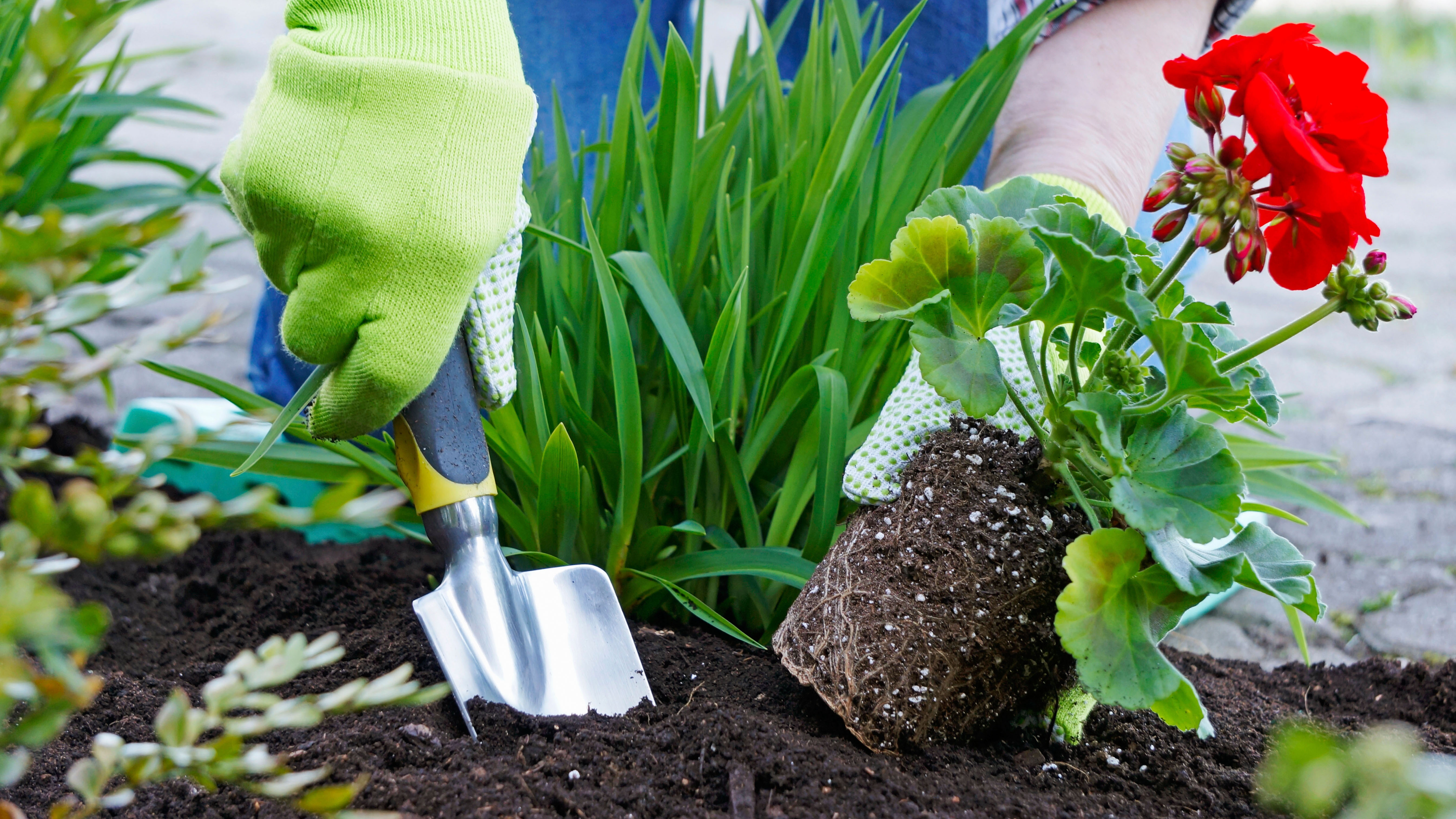
Learning the basics about soil types can be one of the best ways to ensure gardening success. If you've found that your planting picks haven't thrived as you expected, despite you providing the best care, you may be choosing the wrong varieties for your soil.
Knowing what grows best in specific types of soil can help you choose a mix of plants that suits the growing conditions of your garden. Soil can range from being either very acidic or alkaline. But, other soil characteristics will also play a part in how well your plants will grow.
We've brought together lots of helpful info on the main soil types, plus tips on how to get the most from yours. And once you know what you're working with, our guide on composting will give you more brilliant ways to help improve the growth of your plants.

How do you identify different soil types?
The first step to identifying the soil types in your garden is to identify whether it is acid or alkaline. The best way to do this is to buy a pH testing kit, available from Amazon, for your soil which will give you an accurate reading. Soil pH varies from around 3.5 (very acidic) to 8.5 (alkaline) – a reading of 7 is considered neutral and the optimum for most plants is 6.5. Another easy way to tell is to ask your neighbors which plants they are growing in their gardens and work out the approximate pH based on what's performing well in nearby soils.
Some of the most attractive flowering plants, such as rhododendrons, azaleas, and camellias, love acid soil. In fact, they will suffer if the soil is too alkaline as some nutrients become locked up. The first sign of iron and magnesium deficiency in such shrubs is yellowing leaves. If you are unable to grow these lime-hating plants in the ground, plant them as part of your container gardening ideas, filling the pots with ericaceous compost.
Soil over chalk or limestone is usually alkaline and is often rich in calcium. It has good drainage but can be thin and requires copious amounts of organic matter such as homemade, peat-free compost or well-rotted manure added to retain moisture.
When planting on chalk, break up the ground to a depth of 2.5ft (75cm) to allow plants' roots to spread. Honeysuckle, euonymus, and verbascum will all love alkaline conditions.
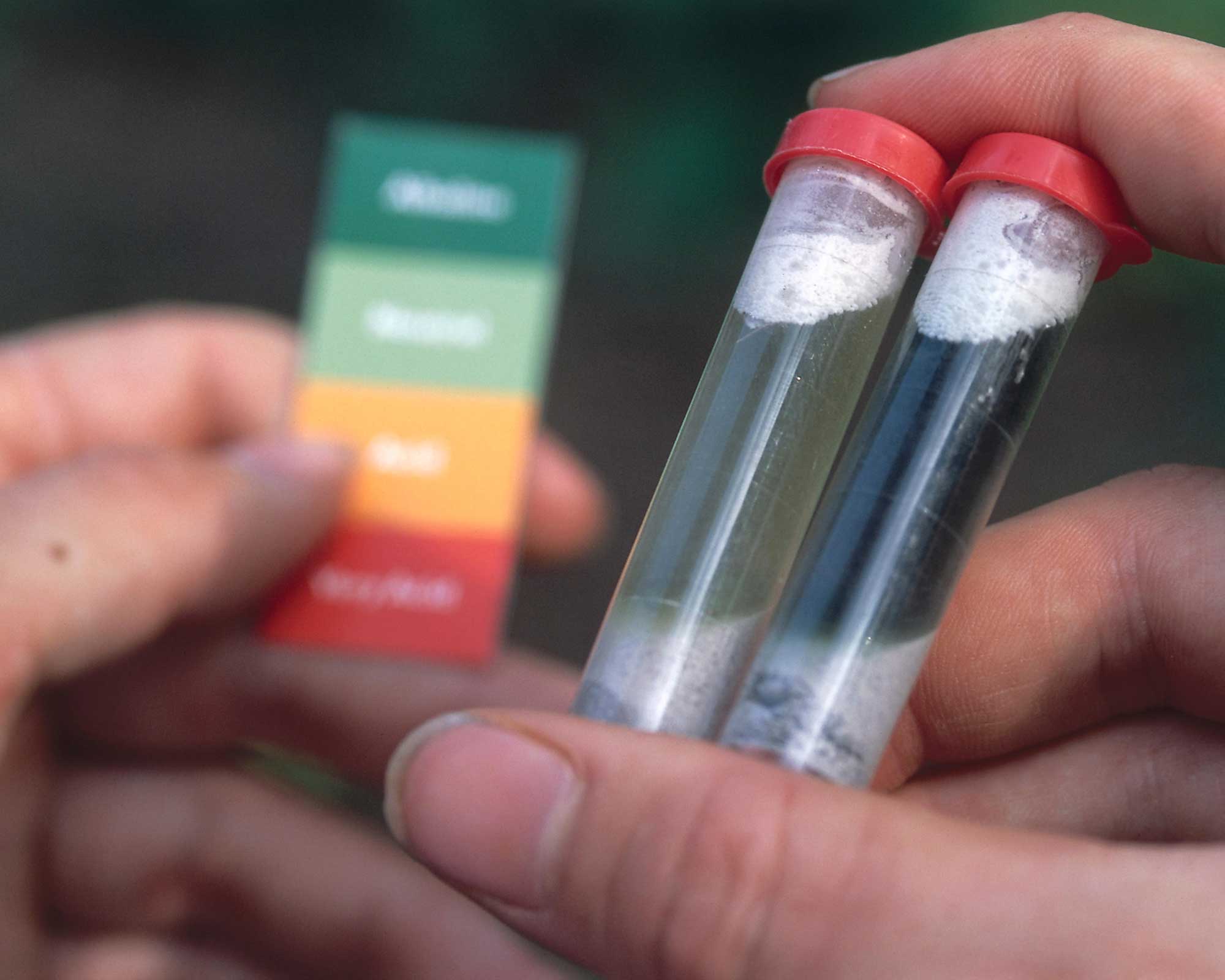
Another way to get to know your soil better is to look at its consistency. As the RHS explains, the size of the particles that make up the soil defines how it can be used in the garden. For instance, clay is made up of very tiny particles, while sand particles are much larger. The characteristics of the soil are defined by the dominating type of particle.
As well as looking at your soil, assessing how moist or dry it is, and how easily you can get your spade into it, you can also try the following simple test. First, take a sample of soil from about 4–6in (10–15cm) below the surface – if you have a large plot, take a few samples from different areas. If it is not already damp, add a little water so that it's moist but not wet. Then, feel the texture with your fingers before trying to roll it into a ball.
A soil rich in clay will feel smooth and sticky and have a surface sheen like plasticine if you rub it. When rolled into a ball, clay will keep its shape well, and it can be molded to form a long ribbon. It will also retain a fingerprint mark when you press your thumb onto it.
Sandy soil feels gritty, and when you try to roll it into a ball, it will fall apart. Silty soils have a smooth, soapy texture and will make a loose ball shape but will easily fall apart and cannot be molded into a ribbon like clay. A peaty soil feels spongy and won't roll into a ball – drops of water may also come out when you squeeze it. Depending on its exact make-up, you may be able to roll loam into a ball and even a ribbon shape if it's a clay loam, but it will not leave a fingerprint mark when pressed.
If you suspect your soil is chalky, check for the tell-tale signs of white chalk and stony flint in it. You can also add some soil to a jar of vinegar, and if it froths, then you know it contains chalk or limestone and will be very alkaline.
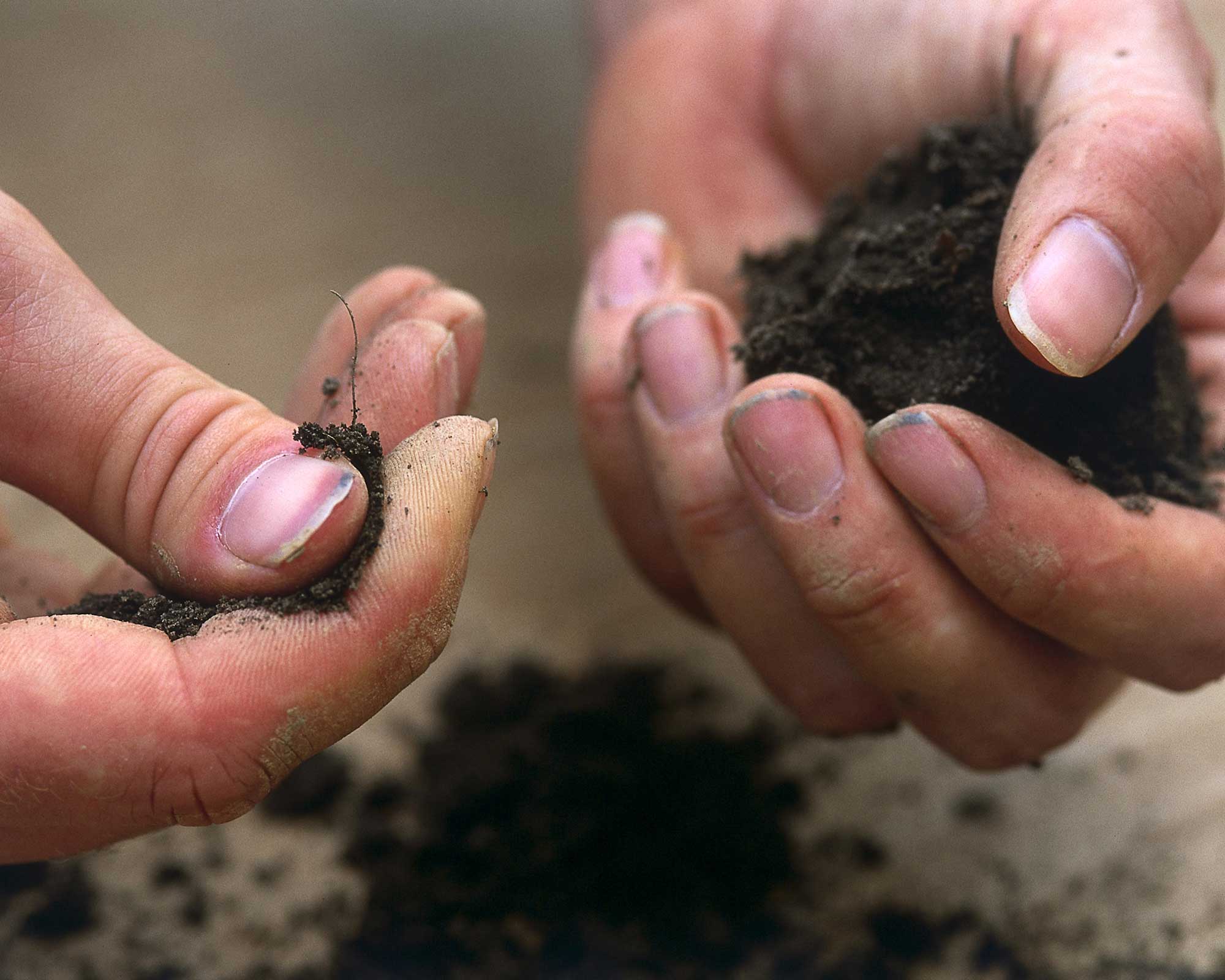
6 soil types and how to make the most of them
While all soils fulfill a similar function, there are many different types, and knowing which one you have in your garden will help you to choose plants adapted to thrive in your specific conditions.
Clay and sandy soils are the most common types; silty soils are less prevalent and are generally found on flood basins near rivers or where rivers have previously existed; and peaty and chalky soils are rare in gardens and exist in just a few areas of the country (at least, in the UK).
Although there is no 'good' or 'bad' soil, since there are plants adapted to each type, some can be more challenging to cultivate and may not support as many garden plants species.
We've rounded up advice for different soil types below. So, once you've identified which one you have in your garden, you'll have a better idea of which flowerbed ideas to try.
1. Clay soil
These soils are made up of a large proportion of microscopic clay particles, which can become compacted, binding together tightly to form large, solid, airless clumps.
They are known as 'heavy' soils, not because they weigh more than others, but because they are difficult to dig – if you have clay, you may not be able to get even your best garden spade into it in the summer.
Getting the most from it
Improve the drainage by digging in as much horticultural grit, sharp sand, or even fine gravel dredged from freshwater sources as you can muster. There are more tips for gardening on clay soil in our dedicated guide.

2. Sandy soil
Sand particles are much larger than clay, and they also have bigger spaces between them that allow water to drain through easily. As a result, sandy soils tend to be dry and relatively infertile, since plant nutrients are suspended in solutions of water and also drain away.
Often referred to as 'light' because they are easy to dig, sandy soils also warm up quickly in spring, allowing seeds to germinate and plant growth to begin sooner than in other soils.
Getting the most from it
To give plants the best start, pour compost into each planting hole to the depth of the head of a spade.
Weeds must be kept tightly under control. For minimal maintenance, cover the earth with a weed-proof, semi-permeable membrane, securing it with stakes, then cut slits to plant through. Once planted, cover the membrane in around an inch (3cm) depth of gravel.
Expert tips
As these soils are dry and warm in early spring, they can be ideal for sowing early vegetable crops. The drier conditions, especially in winter, also suit plants such as lavender, rock roses, and olive trees – perfect picks if you're looking for Mediterranean garden ideas.
Perfect plants
Verbena bonariensis appreciates well-draining soil. Kniphofia is an exotic choice ideal for coastal gardens. Echinacea purpurea 'Doubledecker' is also a good choice, especially if you're looking for bee-friendly plants.
Other top picks include achillea, agapanthus, amelanchier, spring bulbs, buddleja, delphinium, dianthus, fuchsia, geranium, bay, poppy, ornamental grasses, sedum, and thyme.
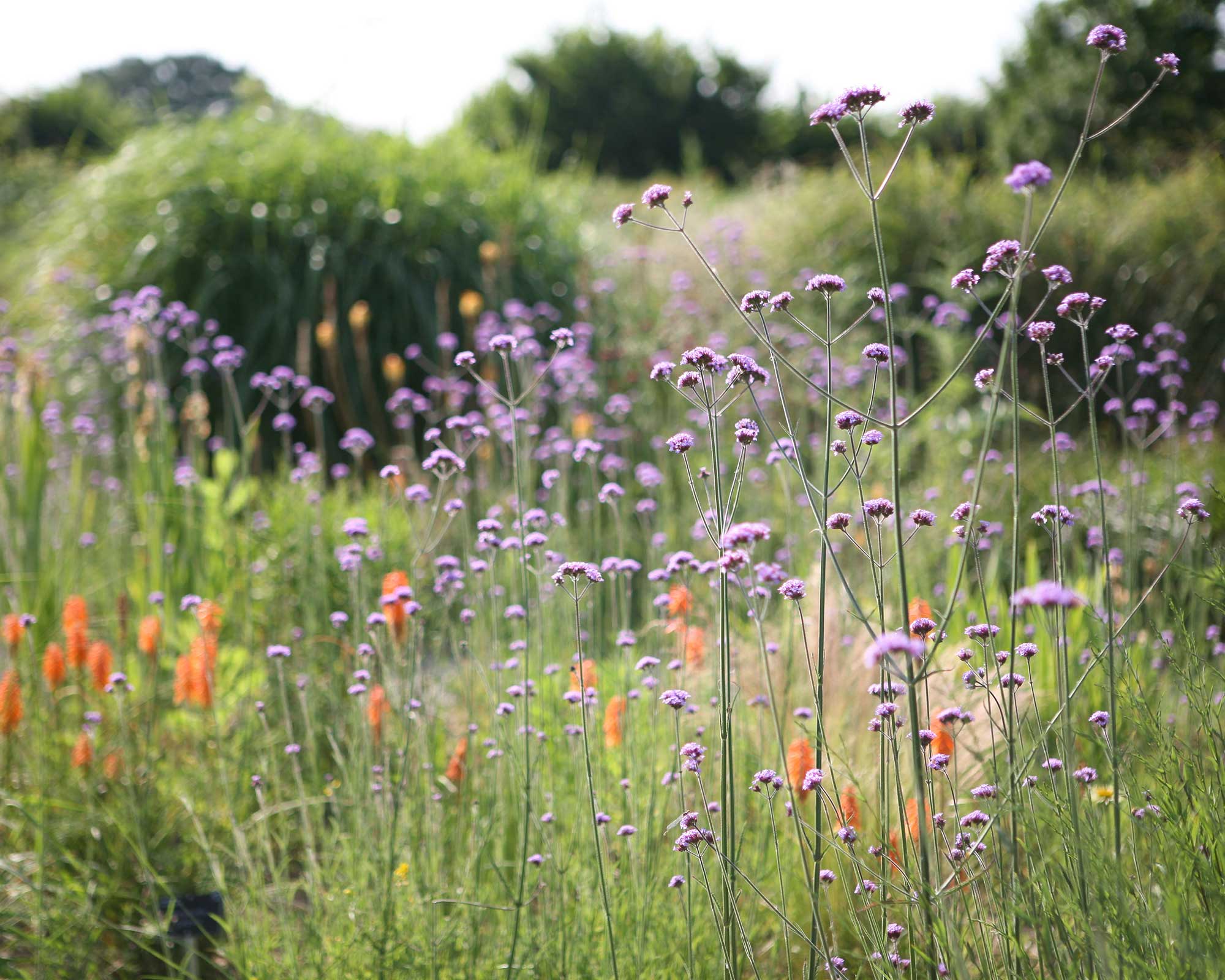
3. Silty soil
Silt particles are smaller than sand but larger than clay. The gaps between them allow good airflow and drainage while still retaining some water and nutrients.
Getting the most from it
Silty soils suit a wide range of plants, including any that like moist, free-draining conditions. However, the small particles in silty soil can cause it to become compacted, especially if walked on while wet, so avoid this if possible.
Expert tips
Silt soils are prone to washing or blowing away in the rain or wind. As the RHS suggests, you can add organic matter to this type of soil to make the silt particles more stable. How about giving worm composting a go if you haven't already?
Perfect plants
For this type of soil, try aster (including symphyotrichum), birch, dogwood, delphinium, lupin, phlox, rose, rudbeckia, leucanthemum, sweet box, viburnum, willow, and hellebores. You can learn more about how to grow hellebores with our guide.
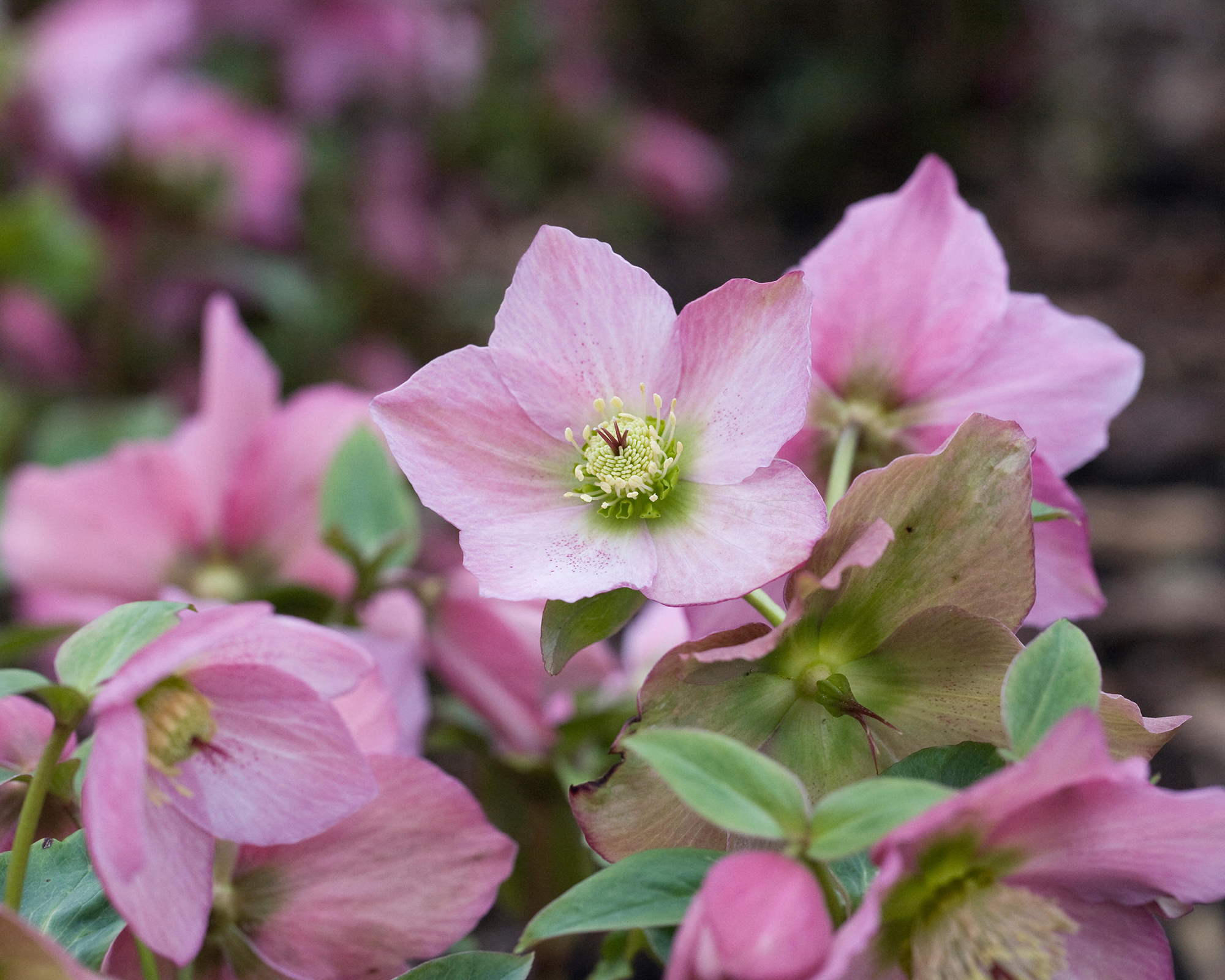
4. Chalky soil
If you have chalk, you will see lumps of the soft white stone, as well as hard pieces of flint.
Many chalky soils are shallow, lying over a layer of chalk or limestone. They are also alkaline, free-draining and relatively infertile. If they also contain a good proportion of clay, they can be water-retentive and contain more nutrients.
Getting the most from it
Where you have a thin layer of soil over chalk bedrock, try learning how to plant a wildflower meadow that will thrive in these conditions. Or, try planting small species with shallow root balls. There are more tips for working with chalky soil in our dedicated guide.
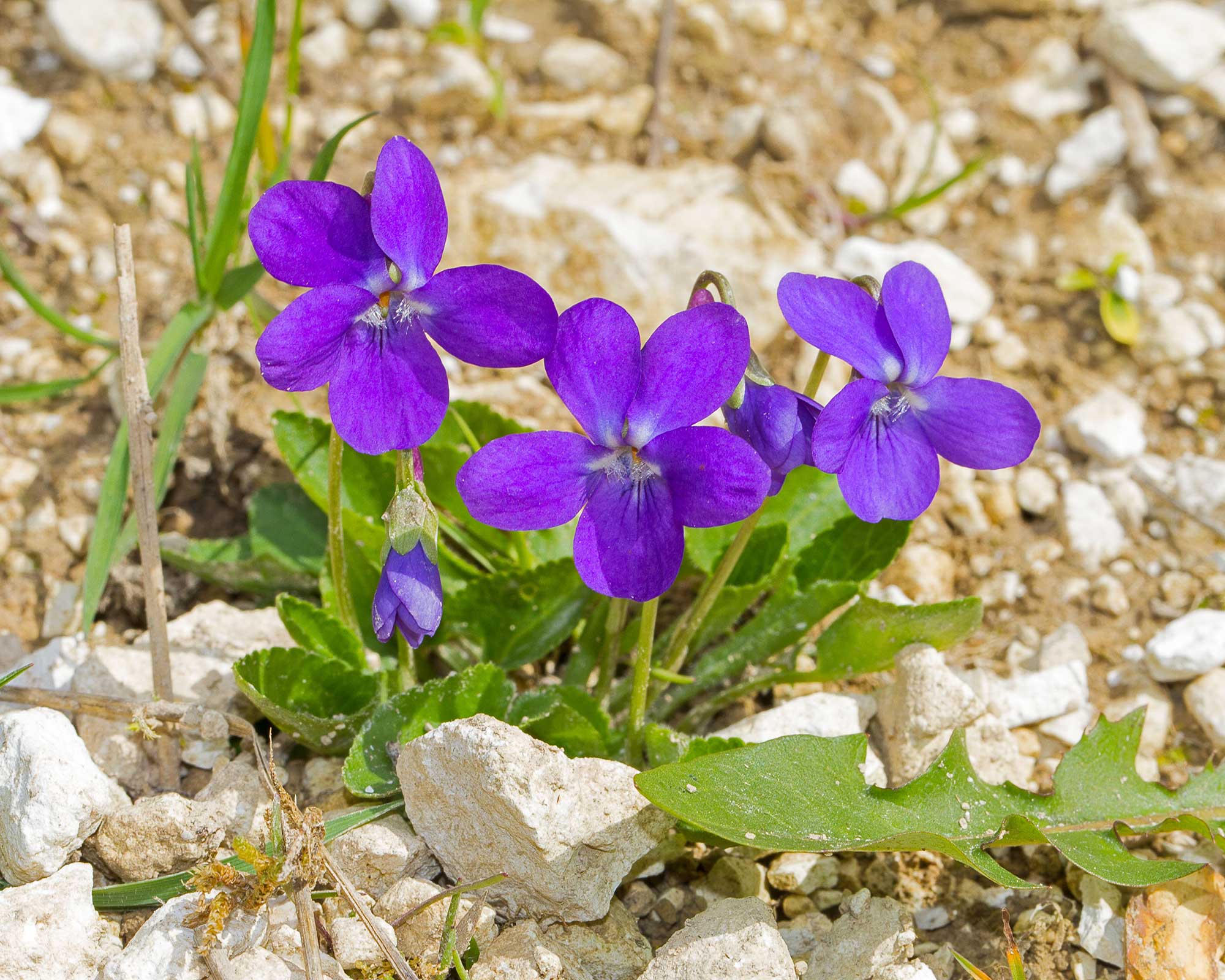
5. Peaty soil
Rarely found in gardens in the UK, peaty soils are made up of organic matter, such as decomposed plants. Peat is dark in color, low in nutrients, and water-retentive – it holds on to moisture like a sponge.
Expert tips
This type of soil is very acidic. This means it will support plants such as rhododendrons, azaleas, and camellias, but will be unsuitable for those that prefer alkaline conditions, including clematis and lavender.
Perfect plants
Rhododendron, azalea, camellia, pieris, blue-flowered hydrangea, heathers, and witch hazel will all thrive in peaty soils. You can learn more about how to grow hydrangeas in our guide.

6. Loams
Water-retentive, free-draining, and fertile, loam soil contains roughly equal proportions of sand and silt, together with enough clay to hold moisture and nutrients. As a result, it offers gardeners – and plants – the best of all worlds.
When improving a soil, it is a loam-like consistency that you are aiming to achieve. Sandy loams have freer drainage, while clay loams hold more water, but all types are suitable for many different plant species.
Expert tips
You can make a heavy clay or light sandy soil more loam-like by mulching – see below for more info on how to improve soil.
Perfect plants
Only those that are adapted to very free-draining conditions (such as drought-loving Mediterranean herbs) or bog plants that love lots of moisture (such as candelabra primulas and Siberian flag irises) will turn up their noses to loam. The list of suitable plants is therefore almost endless, and most vegetable crops will also thrive in loam.
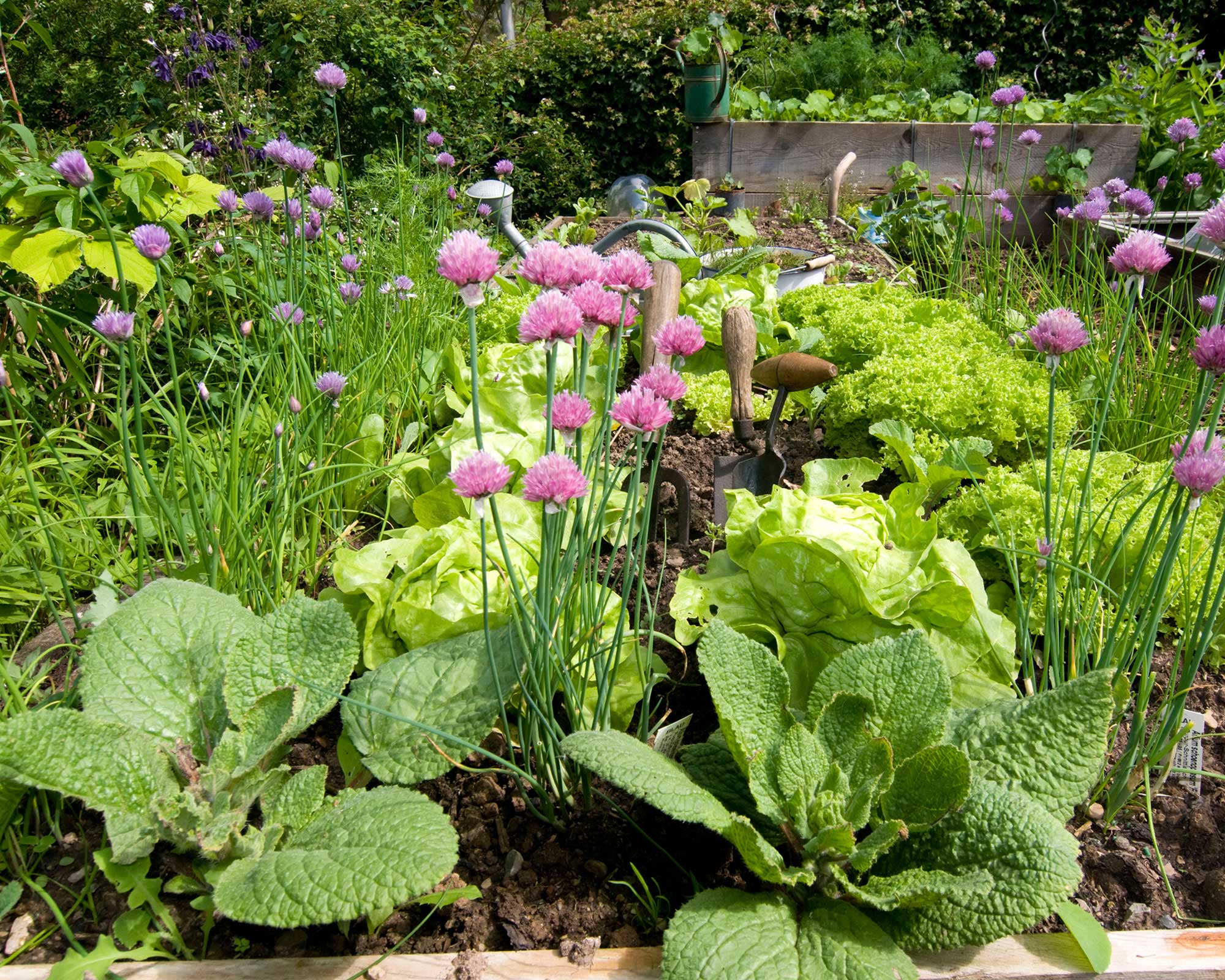
How do you deal with hot and sunny soil?
These will be areas like a south-facing bed or border that get the full heat of the sun all year round. Not all plants will survive such conditions but exotic choices will thrive.
Getting the most from it
Lay a hose with small holes punched along its length through the bed, to drench the soil in the evening when needed during particularly hot spells. Mulch the soil with well-rotted manure in autumn and spring with coarse compost or leaf mold to help with moisture retention.
Exotic plants which love the hot sun in winter will need more protection from the winter frosts. The crowns of tree ferns and banana plants must be wrapped in horticultural fleece or hessian.
Top tips
Sunny plots are ideal for many herbaceous favorites – roses, bergamot, and tobacco plants, for example. They are also perfect for hot-colored tender exotics such as cannas and ginger lilies, but grow them in large plastic pots that, come spring, are submerged in beds, but can be lifted in autumn and overwintered in a greenhouse to avoid frosts.
Perfect plants
Cannas give an exotic feel. Aeonium arboreum 'Zwartkop' is a beautiful succulent. Dahlias will also work well in a hot border. You can find more inspiration in our guide to the best tropical plants.
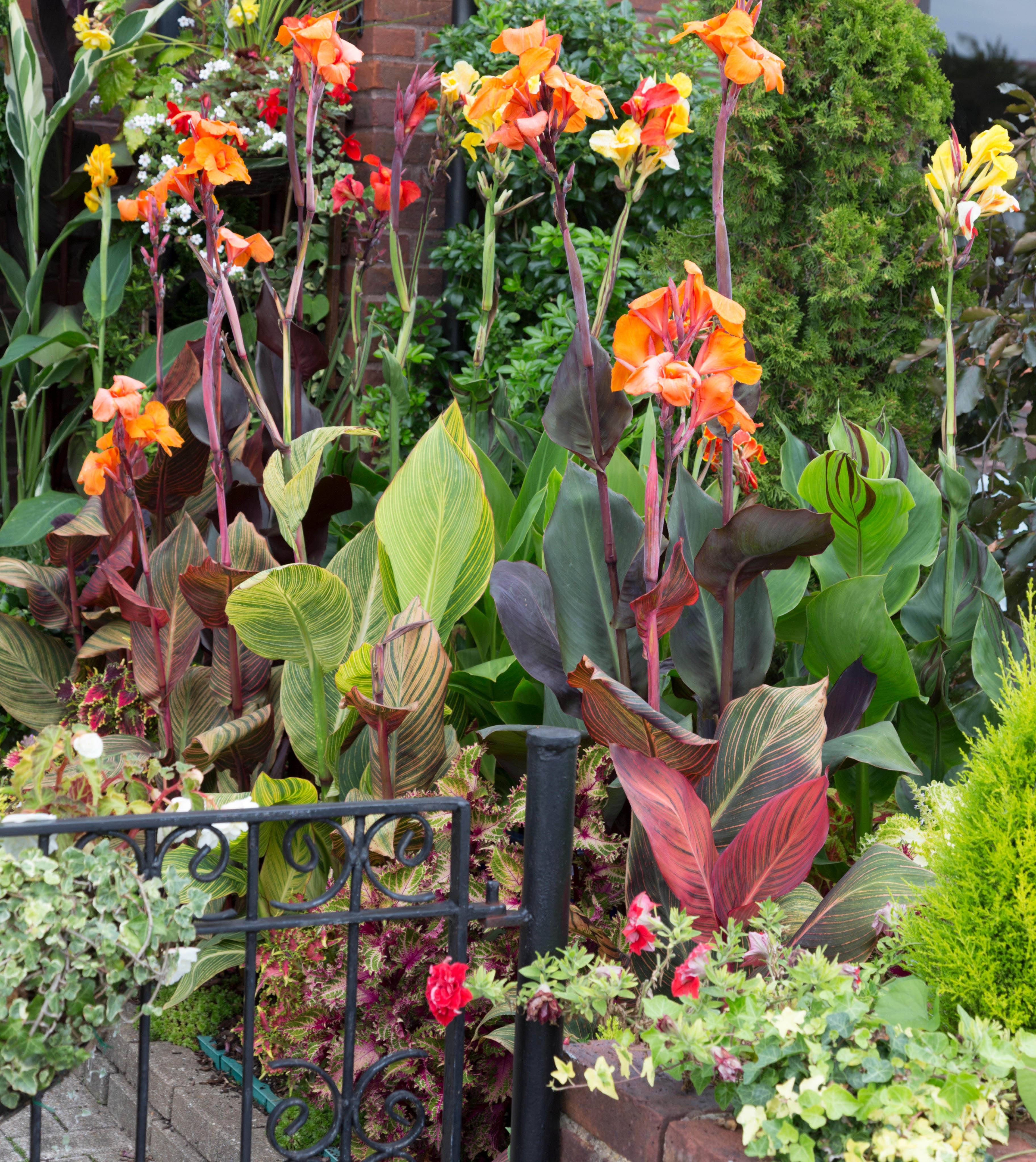
How do you deal with shady and dry soil beneath trees?
This is a difficult garden area in which to establish plants, and only a limited few will survive with no watering. But, there are things you can do to improve the quality.
Getting the most from it
Before planting, dig a deep hole part-filled with compost, and thoroughly soak the plant's rootball. Water new plants weekly until they establish. Dig in organic matter to increase the moisture retention of the soil, mulching heavily with a thick layer of bark chippings in spring.
In spring and during hot spells, thoroughly soak the ground once every 10 days – this encourages deep root penetration, whereas watering little and often develops weak, shallow-rooted plants.
Expert tips
Under deciduous trees, plant spring-flowering bulbs such as cyclamen, anemones, snowdrops, and narcissi. Create a ground cover of foliage to retain moisture. If planting in terracotta pots, line them with plastic to retain moisture in hot spells, adding moisture-retentive gel granules to the compost.
Perfect plants
Vinca major is a trailing spreader for tough spots, while Epimedium latisepalum has dainty flowers. Helleborus orientalis can also do well if you're looking for a flowering perennial. There are more best plants under trees to try in our guide.
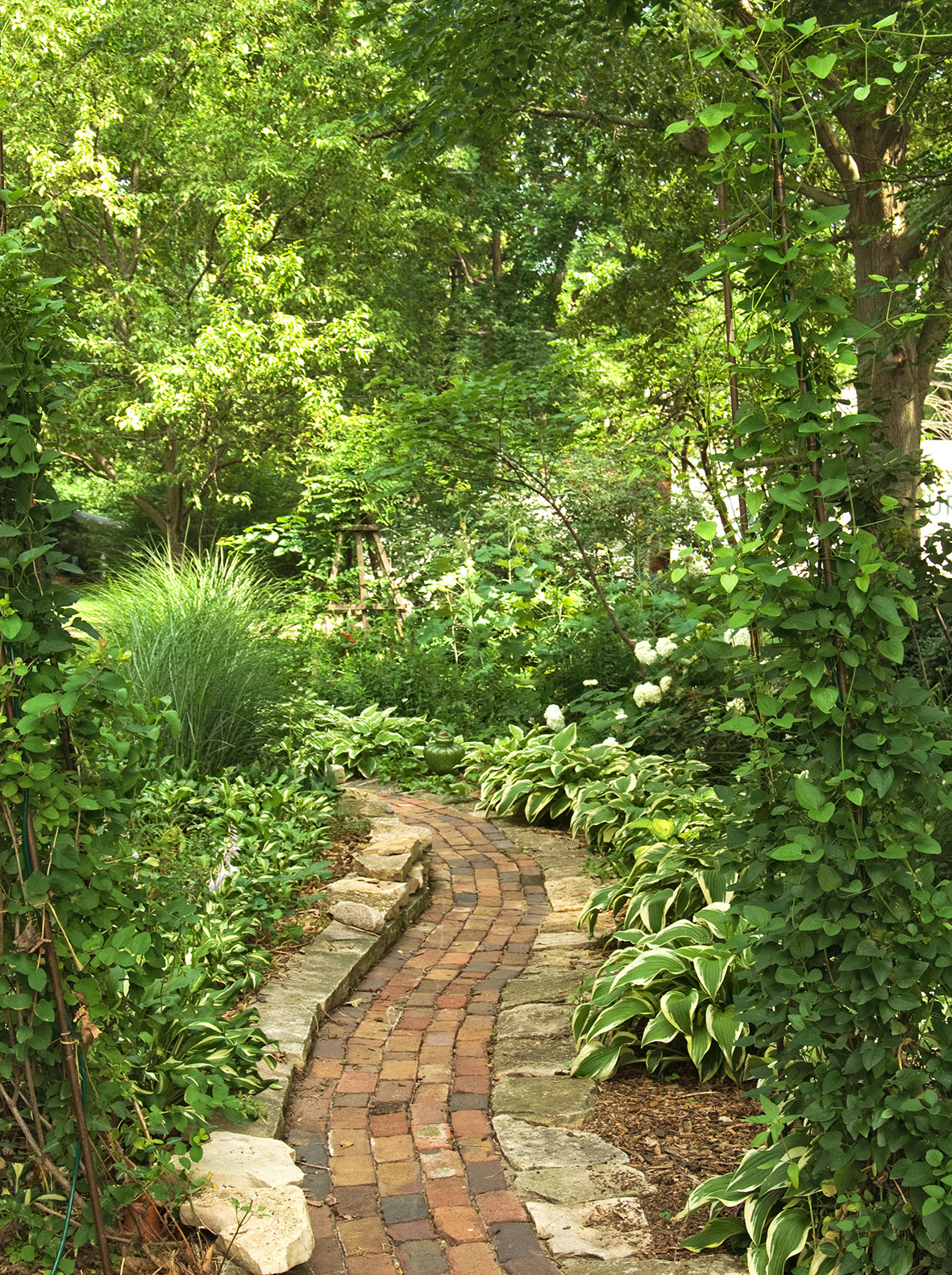
How can you improve your garden soil?
The best advice for any gardener is to choose plants adapted to your site and soil conditions. But we all want what we can't have, so if you have your heart set on a plant that likes good drainage but you have heavy clay, or a rose that prefers rich soil and you have dry, infertile sand, you can improve your soil to widen your choices.
The best way to do this is to add a 2in (5cm) layer of well-rotted garden compost to the surface of the soil. If you want quick results, hot composting is a good approach. Alternatively, you can use well-rotted manure (sourced from an organic farm or stable, so that it does not contain herbicides). This is known as an organic mulch, and applying it annually will improve all types of soil. It contains a substance known as 'humus' that coats tiny clay and silt particles and binds them together to form a crumb-like texture, rather than solid clods. This increases the spaces between the particles, increasing airflow and drainage, and helping to prevent compaction.
Covering clay soils also prevents them from forming solid crusts in summer. Humus also coats sandy particles, but in this instance, it acts like a water magnet, allowing them to hold on to moisture for long enough for plants to take it up through their roots.
Apply an organic mulch to clay soils in winter, and to dry sandy soils as part of your spring garden jobs, to prevent winter rains washing it away. Leave a gap around the woody stems of shrubs and trees so that the moist mulch will not rot your plants.
A mulch laid on the soil surface will be taken down and incorporated into the lower depths by worms and other creatures. Here, the organic matter not only improves the structure of the soil, but it also continues to decompose, releasing plant nutrients slowly throughout the growing season.
Another top tip is to protect your soil, particularly those rich in clay or silt, from compaction by never walking across it when it's wet. After rain, put down wooden boards for walking on, which will help to spread your weight if you need to tend your beds while the soil is still damp.
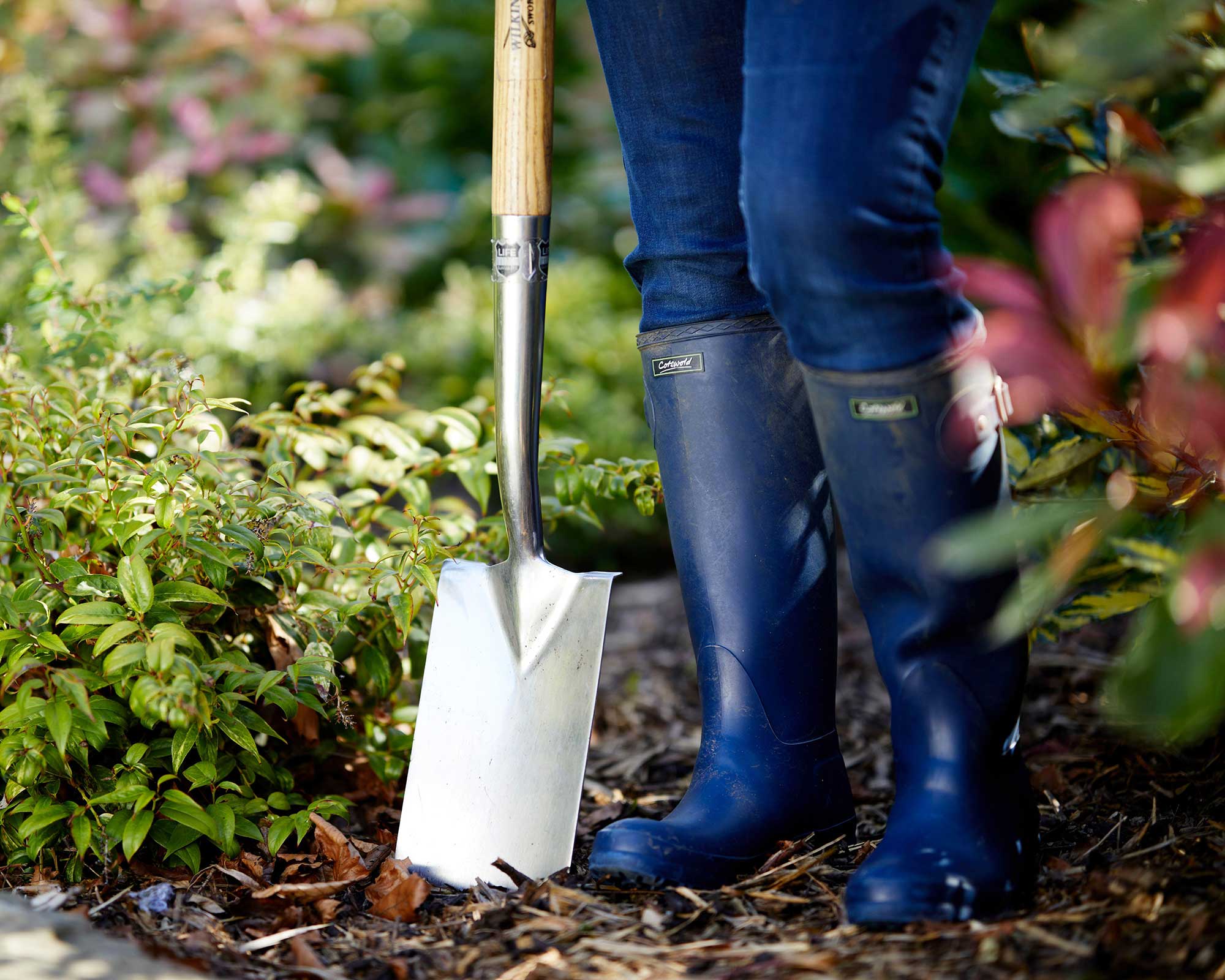
What vegetables can you grow in different soil types?
Want to grow your own crops for a delicious harvest next season? Different veggies suit different types of soil – here's a quick guide on the best picks for your garden:
- Clay soils suit lettuce, chard, green beans, broccoli, Brussels sprouts, and cabbage.
- Sandy soils are good for onions, most herbs, tomatoes, and root vegetables, including carrots, parsnips, potatoes, and radishes – one of the easiest vegetables to grow.
- For silty soils, try broccoli, cabbage, courgette, green beans, kale, lettuce, onion, potatoes, pumpkin, tomatoes, squash, and sweetcorn.
- Chalky soils are well suited to radishes, Swiss chard, and sweetcorn.
- Finally, if you have peaty soil (but it's not too wet), try potatoes, celery, onions, carrots, and lettuce.


Teresa has worked as an Editor on a number of gardening magazines for three years now. So she is lucky enough to see and write about gardening across all sizes, budgets and abilities. She recently moved into her first home and the garden is a real project! Currently she is relishing planning her own design and planting schemes. What she is most passionate about when it comes to gardening are the positive effects it has on our mental health to grow and care for plants, as well as being great for the environment too and help provide food and shelter for wildlife.
- Zia AllawayFreelance writer
